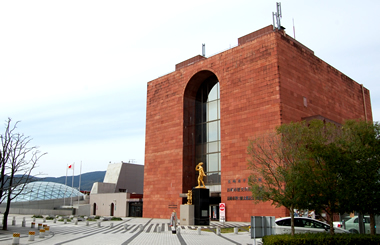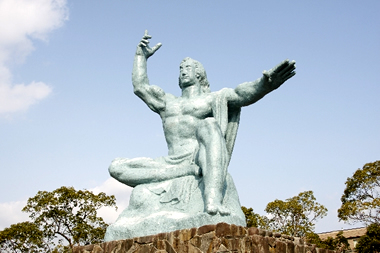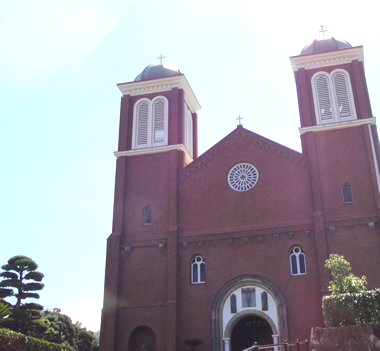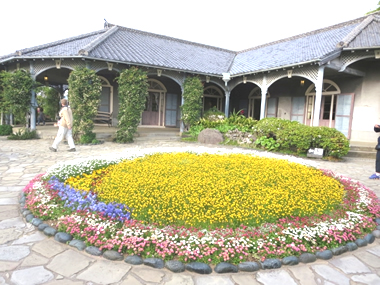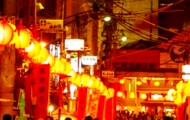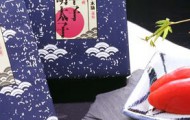Nearby Tourist Information
The Nagasaki Peace Memorial Museum
On August 9th, Showa 20 (1945), at 11:02 a.m. Three days after the atomic bombing of Hiroshima, an atomic bomb was dropped in the Urakami area in Nagasaki City, causing the death of around 150,000 people. This museum plainly displays and recounts the horrors of radiation exposure, how the atomic bombing came to happen, the reconstruction of Nagasaki from the time of radiation exposure to the present, the history of nuclear weapons development, and the longing for a peaceful world with no nuclear weapons.
If you compare the photos of Nagasaki immediately
after the atomic bombing to that of the present, you will discover the courage of Nagasaki citizens, and the remarkable pace by which the city of Nagasaki was rebuilt. Atomic bombs and wars are not yet things of the remote past in the current state of the world. As you squarely face each display, please take them as the “tragedies of history”, and take a moment to think about true peace.
You can browse books related to atomic bombs and peace, as well as use the video section installed in the attached library.
Nagasaki Peace Park
The Peace Memorial Statue of Nagasaki Peace Park
The statue is located in the northernmost center of the park. It was made by Seibo Kitamura, and symbolizes the love of God and the compassion of Buddha. Its right hand is raised high to signify the threat of nuclear weapons, while the levelly extended left hand signifies peace. Its closed eyes pray for the happiness of the nuclear bomb victims in the afterlife.
Urakami Church
In Meiji 13 (1880), Urakami Christians purchased the former residence grounds of Takatani, the previous chief of Yamazato Village in Urakami. He had once forced persons under interrogation to step on “fumi-e” bearing Christian images. Church construction began in Meiji 28 (1895), a consecration ceremony was held in March of Taisho 3 (1914), the two steeples were completed in Taisho 14 (1925), and bells were hung. Thirty years of labor service and donations allowed for the completion of the red brick romanesque church with 84 stone angel statues set alongside its brick walls. However, both the cathedral and stone statues were reduced to rubble by the 8/9/1945 atomic bomb drop. In Showa 34 (1959), the church was reconstructed with reinforced concrete. In Showa 55 (1980), the outer brick tiles were remodeled and some interior construction work was performed. It can accommodate approximately 1,250 people.
Glover Park
The Scotsman Thomas Blake Glover came to Japan and established his home on a Minamiyamate hill in 1863. In those days, the streets of Nagasaki were electrified by the enthusiasm of people dreaming of a new dawn for Japan. Foreign merchants with dreams in their hearts crossed the rough sea waves. Nationalists burned with ambitions to overthrow the Tokugawa shogunate. Young people aspired to western scholarship. Still today, one hundred years later, the memories of Glover and his family and the residences of traders who loved and lived in Nagasaki remain unchanged.
Oura Church
Oura Church is a Catholic church in Nagasaki City, Nagasaki Prefecture. Erected in Genji 2 (1865), it is the oldest existing Christian building in Japan. Its formal name is “the Cathedral of the Martyrdom of the 26 Saints of Japan.” As the name implies, the church was built for the 26 martyrs of Japan, and it faces the location of the saints’ execution in Nishizaka, Nagasaki City. It was declared a national treasure in Showa 28 (1953). Also, in Heisei 19 (2007), it was published in the UNESCO World Heritage Sites Tentative List as one of the cultural assets composing the “Churches and Christian Sites in Nagasaki.”

